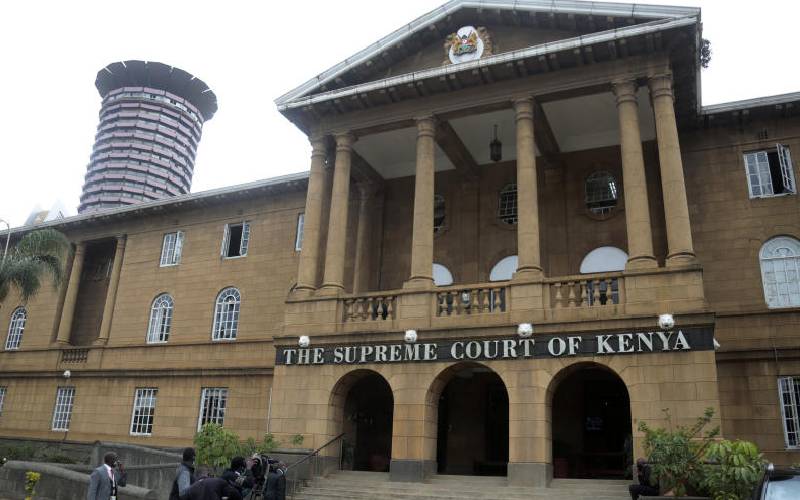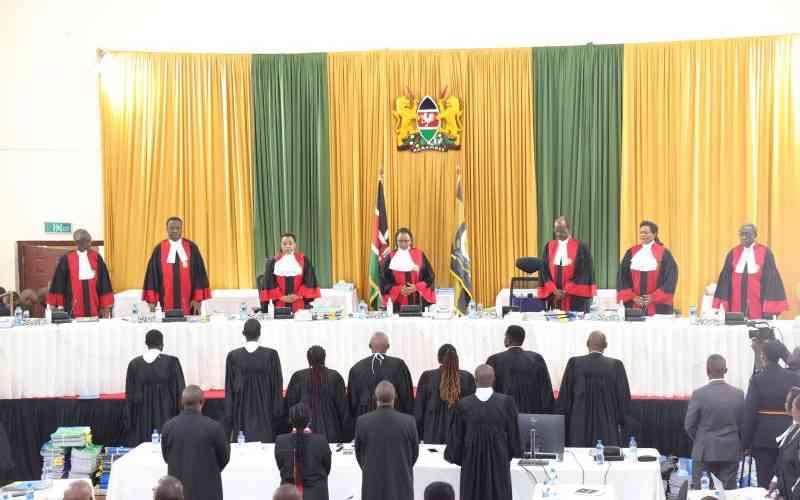
There have been a lot of talk over the 41 judges recruited by the Judicial Service Commission (JSC) who are yet to be sworn in. The nominee judges are 20 for the Environment and Land Court (ELC), 10 for the Employment and Labour Relations Court (ELRC) and 11 for the Court of Appeal (COA).
Advocate James Mamboleo recently wondered why the Judiciary needs 41 judges. He went on to say that the Judiciary didn’t know the number of judges it requires. That is not true.
There are currently 33 ELC judges, 15 COA judges and 12 ELRC judges. As at March 31, the caseloads/pending cases were 16,457 at ELC, 7,315 (COA) and 13,197 (ELRC). These exclude those filed after the scaling down of Judiciary operations as part of Covid-19 containment measures.
The Judiciary may have failed to communicate how the number 41 was arrived at, but suffice it to say that following the establishment of daily data collection practice from all courts from October 2015, the Judiciary now has objective evidence to inform its decisions — from recruitment to budgeting. This data is captured in various reports produced by the Judiciary, including the State of the Judiciary Annual Report.
So, why did the JSC recruit 41 judges and for the specific courts of Environment and Land, Court of Appeal and Employment and Labour Relations? To understand why more judges are required, the Judiciary analysed the caseload burden in these courts vis-a-vis the capacity of the courts.
According to a 2014 internal study by the Judiciary on delays in the magistrates court cases, a case took an average of 667 days to be finalised. Following these findings, the Judiciary put in place breakthrough performance management measures to enhance overall service delivery including expeditious disposal of cases.
Timelines for expeditious disposal of all cases were established. In regard to the COA, it was recommended that each bench handles a minimum of 12 cases a week or a total of 2,500 cases a year. For the High Court, ELC and ELRC courts, the recommended time-frame was 360 days for hearing and determination of a case, including a limit of 60 days to deliver ruling or judgement from the date of the final hearing.
While these recommended time-frames would optimally be met within the context of several parameters (eg greater use of ICT, court recording, adequate courtrooms, and avoiding unwarranted adjournments), they were nonetheless adopted by the Judiciary with the understanding that there would be incremental efforts to ensure an optimal environment for the adopted time-frames to be met.
In essence, therefore, a judge handling a criminal case or a civil case (including Environment and Land or Employment and Labour relations) should dispose of a case within 360 days from start to conclusion.
The Judiciary also came up with the expected productivity of a judge — how many cases he/she is reasonably expected to resolve per month so as to ensure they are working optimally. For the High Court, ELRC and ELC, a judge is expected to conclude at least 10 cases per month, translating to 110 cases per year (less one month of leave).
Back to the question of how many judges are required per court to effectively handle cases filed everyday, those pending (unresolved) and backlog (unresolved for over 360 days). According to the latest annual report of the Judiciary, by June 2019, there were 569,859 pending cases of which 341,056 were backlog.
In order to determine the time required to resolve all the pending cases in a court given its current capacity (disposition time), the numbers would play out as follows: With 15 judges in the Court of Appeal and given its bench productivity of 206, the court will require 5.71 years to clear all the pending cases without handling the year burden of filed cases. Based on an average of cases filed in the past three years (1,977 cases) at an average of 5.71 years, there will be about 11,289 filed cases in the 5.71 years period.
Therefore, the burden of the Court of Appeal will continue to increase. With the expected bench productivity of 88 cases per year, the 1,977 cases require 22 benches to dispense of cases in a year. This translates to 66 judges. The number of COA judges is, however, capped at 30 in the Constitution. The 11 recruited judges would result in an extra three benches and two judges that would fill in for special benches, making it eight benches. Although it would still be below the ideal 22 benches, it would go a long way in improving the timeliness for court users.
The Employment and Labour Relations Court has 12 judges and an annual average of 4,800 cases. It would require 3.61 years to resolve all cases that were pending by March 31, 2020 without handling the annual filed cases, which will have an increased burden of 15,168 cases (4,800 cases x 3.16 years = 15,168 cases). With the expected judge productivity of 110, the 4,800 filed cases would ideally require 44 judges to dispense in a year. Again, this calls for increase of capacity of the ELRC and hence the recruitment of 10 judges for this court.
Stay informed. Subscribe to our newsletter
Lastly, Environment and Land Court has a capacity of 33 judges and 16,457 pending cases. Given its current capacity and the number of cases it resolved last year, the court requires 2.33 years to resolve all the pending cases without handling the filed cases.
The court has an annual average of 6,699 cases and therefore within 2.33 years, the burden would have increased by 15,609 filed cases. With the 110 cases per judge productivity, 6,699 cases would ideally require 61 judges to be able to clear all the filed cases in a year. This is the justification for 20 more ELC judges.
It is thus clear that the number 41 was not arbitrary and if anything, there is a case for recruitment of at least 75 judges; 15 more in COA, 28 in ELC and 32 in ELRC.
Ms Kanyago is Project Coordinator, Judicial Performance Improvement Project
 The Standard Group Plc is a
multi-media organization with investments in media platforms spanning newspaper
print operations, television, radio broadcasting, digital and online services. The
Standard Group is recognized as a leading multi-media house in Kenya with a key
influence in matters of national and international interest.
The Standard Group Plc is a
multi-media organization with investments in media platforms spanning newspaper
print operations, television, radio broadcasting, digital and online services. The
Standard Group is recognized as a leading multi-media house in Kenya with a key
influence in matters of national and international interest.
 The Standard Group Plc is a
multi-media organization with investments in media platforms spanning newspaper
print operations, television, radio broadcasting, digital and online services. The
Standard Group is recognized as a leading multi-media house in Kenya with a key
influence in matters of national and international interest.
The Standard Group Plc is a
multi-media organization with investments in media platforms spanning newspaper
print operations, television, radio broadcasting, digital and online services. The
Standard Group is recognized as a leading multi-media house in Kenya with a key
influence in matters of national and international interest.










